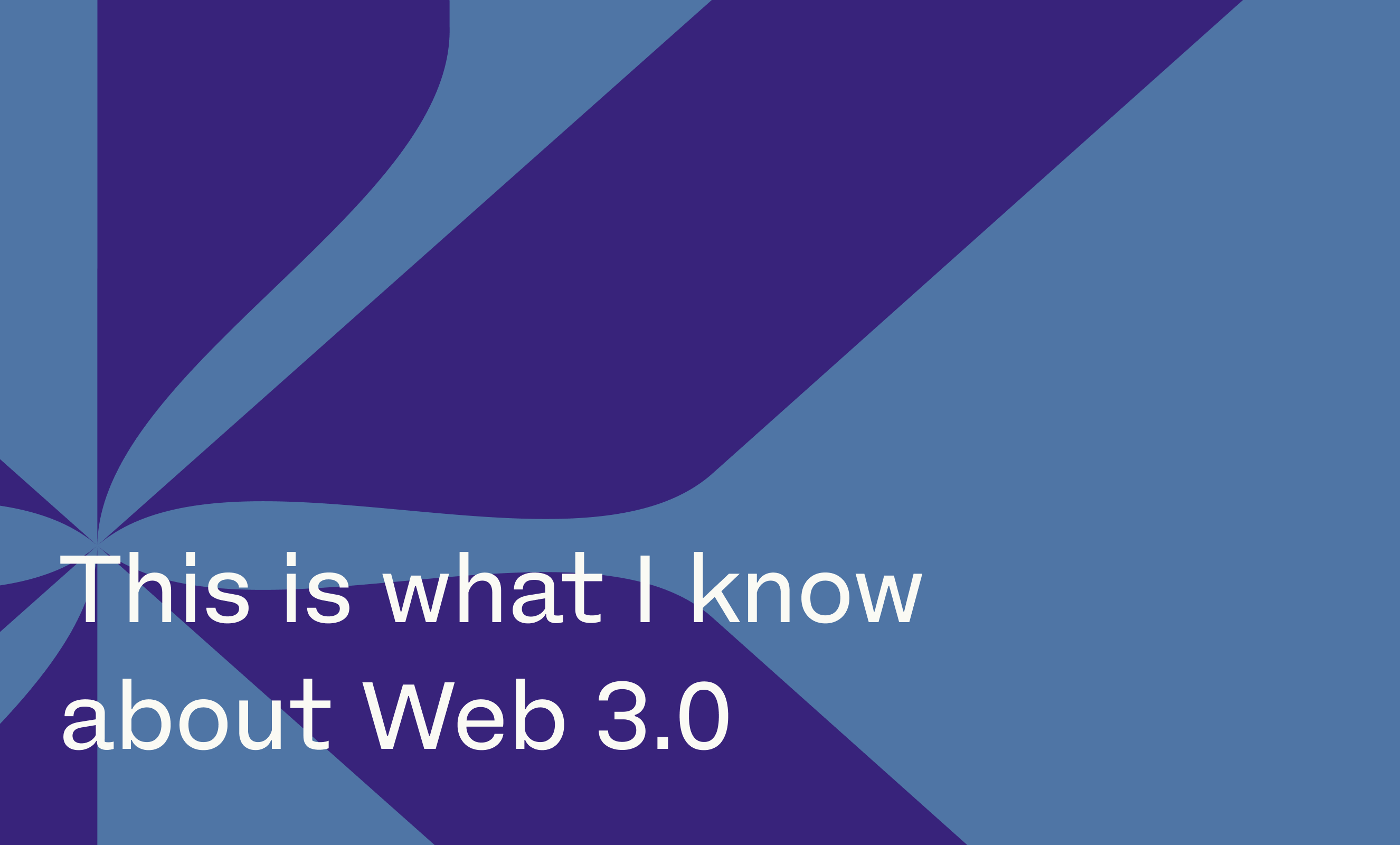27 November 2023
What is Web 3.0?
Since the introduction of NFTs and the rebranding of Facebook into “Meta”, it feels like the next phase of the internet is right around the corner. Everybody is talking about it; about how it will change our lives and lead to a future where technology will be an even more integrated and crucial part of our existence.
Filters

It can be hard to keep up with the latest tech buzzword without really understanding the foundations of these concepts. As someone without a technical background, it was initially hard to grasp what Web 3.0 stands for, how it will really play a role in my daily life, and even harder to anticipate what role I could play in this as a consumer/investor and someone that works for a tech company.
As mentioned in my latest post about NFTs, I am writing a series of articles about these topics for people that, like me, have no technical background. Since I already discussed the metaverse and NFTs, I think the next logical step is to look at the core technology behind them all, Web 3.0 technologies. My hope with this series is to help us all gather an understanding of how these upcoming technologies will impact our lives, for the good, and for the bad.
What is Web 3.0?
In 2006, Tim Berners-Lee, also known as the inventor of the World Wide Web, introduced the world to Web 3.0, and defined this new term as the Semantic Web. The Semantic web is an evolution of the existing web that enables machines to easily interpret data, allowing them to understand and react to complicated tasks performed by humans on the internet. This explanation is quite vague, but it will become more clear if we look at the history of the World Wide Web, which consists of Web 1.0 (1989-2005), Web 2.0 (2005-present), Web 3.0 (yet to come).
Web 1.0 (1989-2005): A static information database
The first stage of the internet is known as the static web: a set of pages filled with information where users could not interact with the content at all, or in other terms, it was “read-only” content. It was a long time ago, so I used an image as a refresher on how the aesthetics looked. You could think of Web 1.0 as a big database of information, where all you could do is search for information.
Web 2.0 (2005-now): The interactive social space
The second stage of the internet, also known as the social web, started with the introduction of interactive platforms such as Wikipedia, Hyves & PP2G (for the old school people who may remember this…), Facebook and YouTube. These platforms made it increasingly easy for users to generate content (posting video, images and text) and interact with each other, including sharing content across various platforms and applications. Not only that; the new Web 2.0 could also be accessed through our mobile phones, which made it even more accessible and ubiquitous.
Web 3.0: The internet of tomorrow
As discussed previously, Web 3.0 is the next stage of the internet, which encompasses new means of content creation and decision-making processes for both humans and machines. This means that ordinary tasks such as ordering your groceries can and will be done by machines rather than humans. Machines will understand the unstructured data and learn from human(s) interactions on the web. They will understand these actions and aim to provide faster and better solutions for our day-to-day tasks. This implies that we will see a wider implementation of AI technologies on the web.
Higher transparency and ownership through decentralisation
More importantly, the key selling point of Web 3.0 for us as users is transparency, ownership and control. Right now, the web is controlled by big tech corporations, such as Google, Facebook, Amazon and Apple, who store and control our data in their data warehouses. This data includes personal information, credit card numbers, surfing behaviour, purchasing behaviour, as well as all the content you post on your social profiles. This means that you and I don’t have any control or ownership over our data. With the possibility of a decentralised web, based on blockchain technology, your data is not stored in a single database, but is encrypted and stored on the blockchain (I briefly described Blockchain technology in my latest article about NFTs). With this new technology, you would be able to choose if big tech corporations can use your data, and if so, you would get rewarded for sharing it. All these promises ensure a higher level of security and privacy on the World Wide Web, and way less dependency on the big tech corporations through decentralised storage management. Additionally, you could easily share your personal data between platforms without the hassle of making a new profile for each one, but rather have a single digital identity. In this way, we would not have to worry about these platforms’ internal security mistakes leading to the leak of our personal information.
A new way of surfing
The Web 3.0 concept has existed since 2006, yet, we are still unsure how this technology will unfold and what the real implications will be. What’s clear is that we are living in a digital world where privacy, security and ownership are hard for us to control. One of the key lessons of this has been that, as creators of content and data, we should all have the choice of owning or sharing our personal information with third parties like Google or Meta. Here’s hoping that the main promises of Web 3.0 will pave the way for a new internet experience where we truly surf the web secure and in control of our course.




